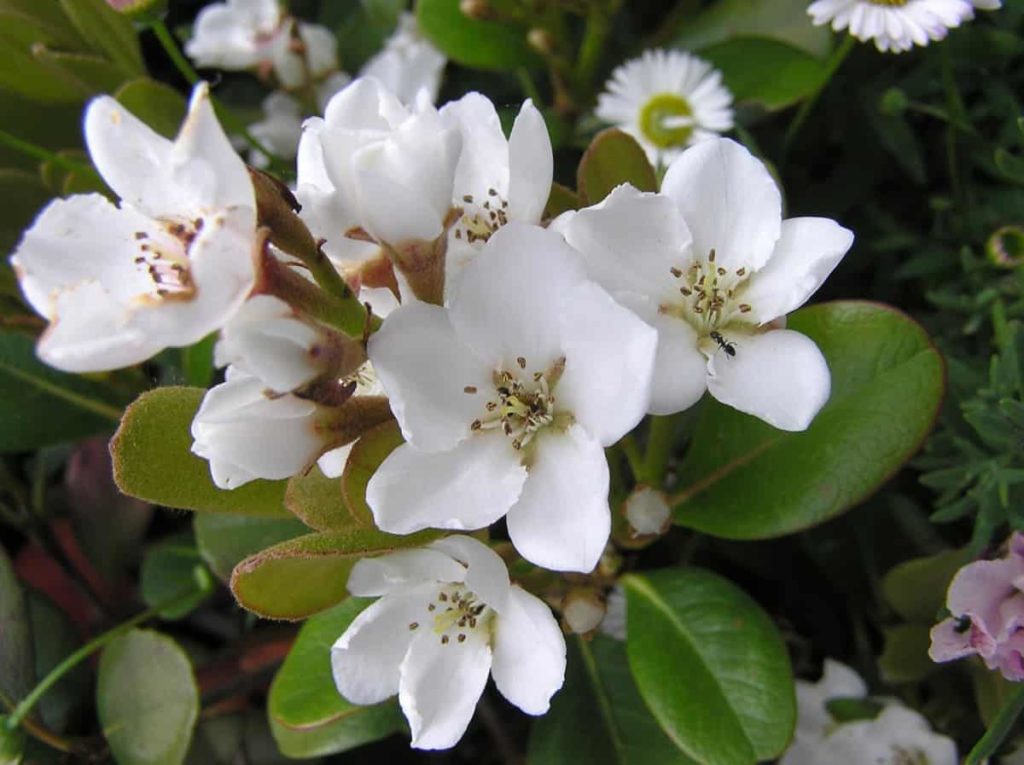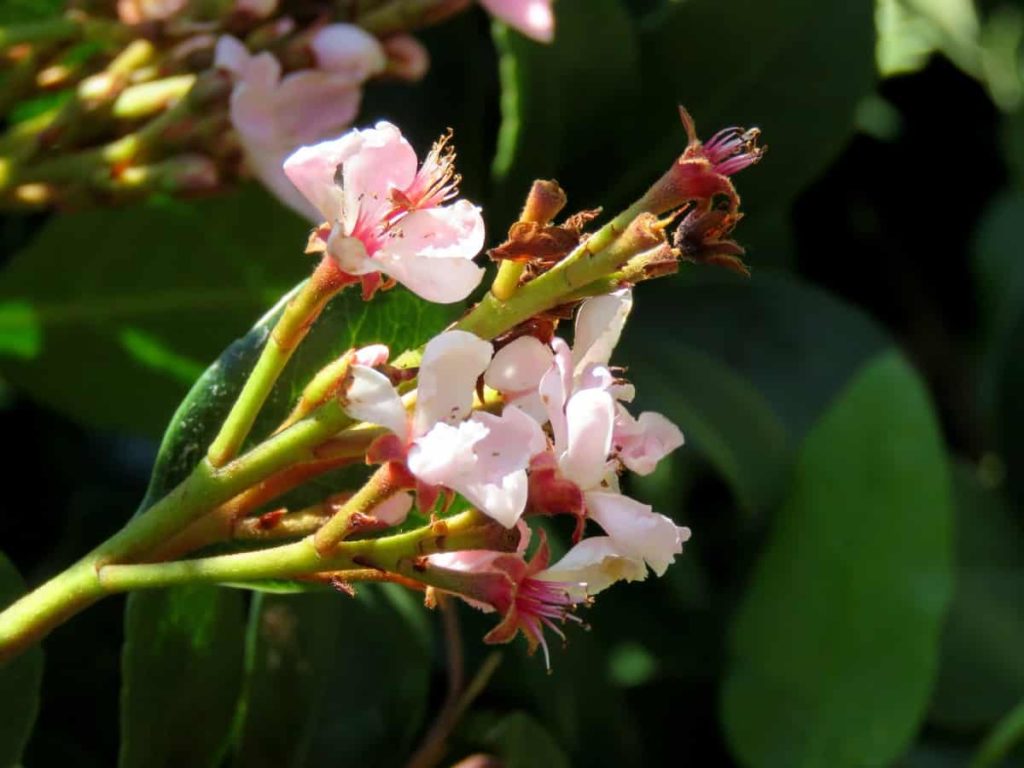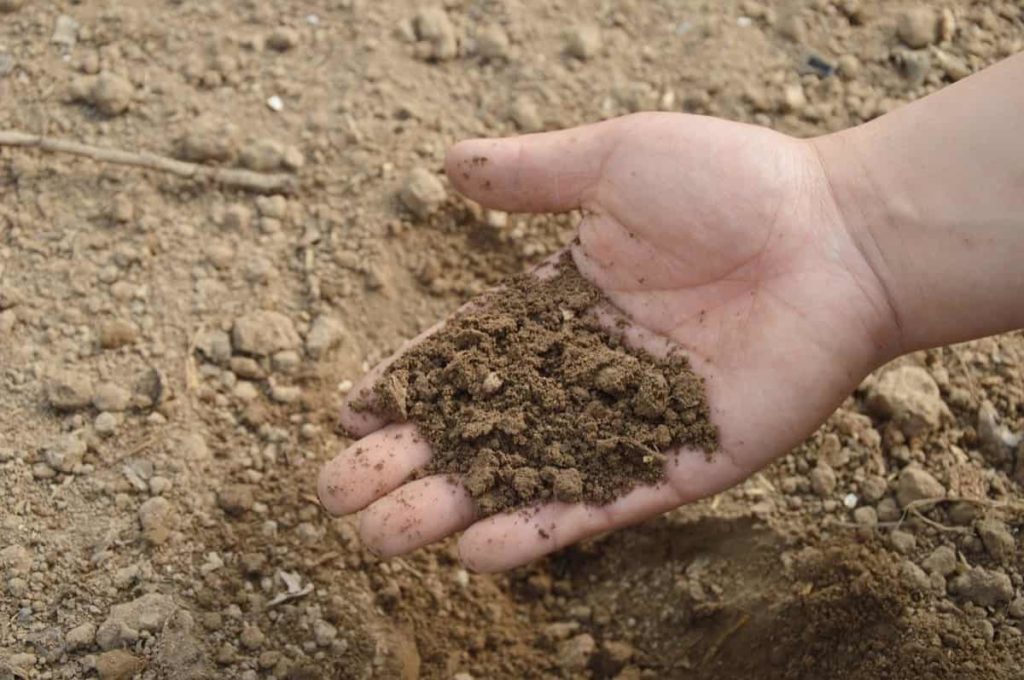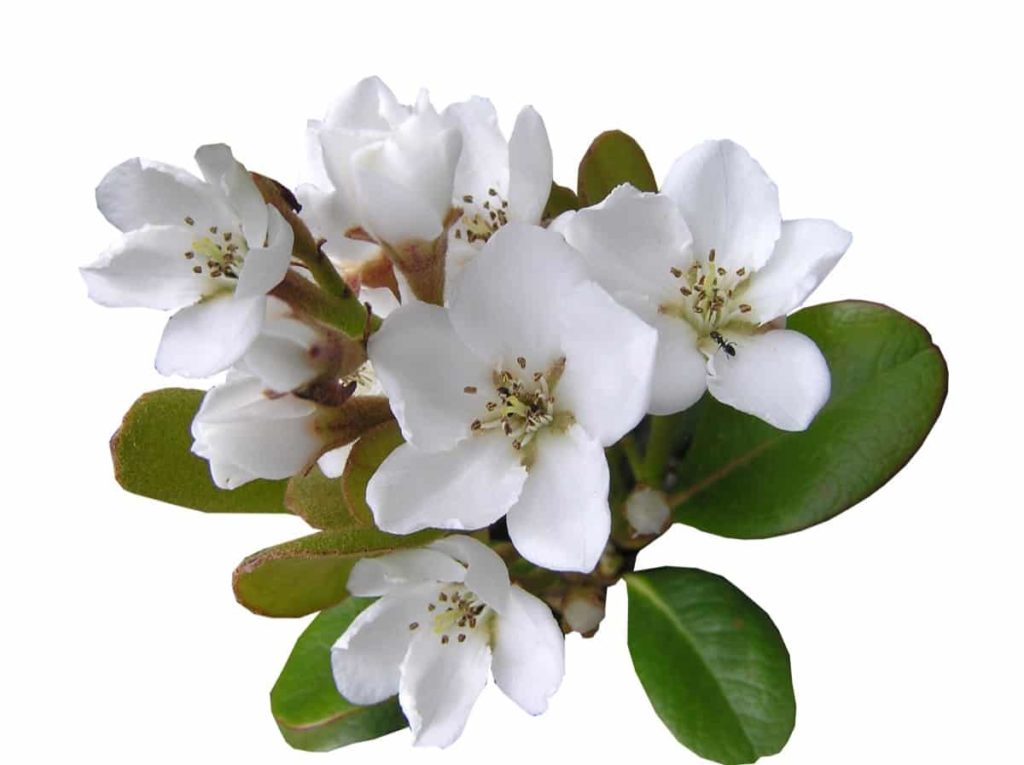Indian Hawthorn is a low-maintenance bush with a cluster of beautiful pink flowers. Indian Hawthorn adapts to many types of soil. They will mostly grow well in any average garden soil however prefer moist, well-drained soil. Established plants will tolerate dry soil conditions. Like many other decorative plants, constantly soggy or wet soil can cause root rot and other harmful diseases. If you don’t know about your soil pH and whether it is suitable for growing Indian Hawthorns or not, it is a good idea to test the pH of the soil in the plantation area. Next, let’s check out the best fertilizer for Indian Hawthorn plants.

To increase the pH (make it more alkaline), you can add pelletized limestone to the soil. To reduce pH (make more acid), you can apply soil sulfur, aluminum sulfate, or chelated iron. Indian Hawthorn will benefit from fertilization. Indian Hawthorn is usually light feeders. However, fertilizer consisting of iron or sulfur will help maintain dark green leaves and support the plant’s sustained growth and overall health. There are many benefits of fertilization with Indian Hawthorn.
When you fertilize your Hawthorn plants, they will be able to absorb more nutrients from the soil, leading to lush and healthy leaves. Fertility can also help improve the overall look of Indian Hawthorn by stimulating flowers and promoting development. Also, proper fertilization will help keep your Indian Hawthorn healthy and disease-free. By providing your plants with the necessary nutrients, you can help them resist pests and diseases. It is essential for Indian Hawthorn, as they are sensitive to various problems.
Nitrogen helps in root and steam development and provides a strong foundation for the plant. Phosphorus helps the roots to absorb nutrients better. Potassium protects the Hawthorn against diseases and helps with the Hawthorn color. If you observe one of the following, you will know if your Hawthorn needs fertilizer:
- Yellow leaves, no new growth, and small yellow flowers mean your Hawthorn plants need nitrogen.
- Dark leaves, falling leaves, and weak flower buds mean your Hawthorn needs phosphorus.
- Weak warts, poor buds, yellow edges on leaves, or brown leaves mean your Hawthorn needs potassium.
Best fertilizer for Indian Hawthorn plants
Organic fertilizers for Indian Hawthorn
Eggshells usually contain up to 2% nitrogen, although some have five times that percentage. Since nitrogen encourages green growth, using coffee grounds as fertilizer around trees and shrubs encourages them to grow lush and tall. Adding organic compost to the soil as a mulch can also help increase acidity and maintain acid soil conditions. The compost mixed with soil around the bush can also encourage healthy growth.
In case you missed it: How to Make a Greenhouse on Terrace: Mini/Small Greenhouse Ideas and Tips.

If the garden is heavy or sandy, modify its soil quality by adding compost or manure. If the garden soil is slightly alkaline, don’t worry, as it can withstand salty soil. When you plant, add topsoil or organic peat humus to the hole. In addition, you can mix it with cow manure to enrich the soil.
Once established, these plants resist pleasant drought. Indian Hawthorn will appreciate a little water during prolonged dry spells. Applying a 2 to 4-inch layer of organic mulch helps maintain moisture in the soil and suppress the growth of weeds. Make sure to place the mulch at least 6 inches away from the stem base. Wooden chips are a great, long-lasting, organic choice.
Commercial fertilizers for Indian Hawthorn
NPK ratio
The Hawthorn trees are not heavy feeders, so they don’t need much fertilizer to get healthy every year. However, potassium fertilizer should be used as an essential fertilizer, including nitrogen and a certain amount of phosphorus fertilizer. It is primarily meant to promote the growth of the Hawthorn fruit, improve the carbohydrate content of the Hawthorn, improve the quality of the Hawthorn and increase production.
Indian Hawthorn tree flowers during spring, so it needs complete fertilizer. You should add complete fertilizer to the water supply about once a month. Or you can apply readymade fertilizer on the soil around the plants. Fertilizers can be nitrogen, phosphorus, and potassium blend of 16-4-8, 12-6-6, or 12-4-8. Regular fertilization is unnecessary, but you can do it if you want. A complete fertilizer is essential to boost vigor before new growth.
Regularly fertilize your Indian Hawthorn using water-soluble, balanced fertilizer 1:1:1. It means that it is not very rich and not too weak but provides the right balance of nitrogen, phosphorus, and potassium. The most common fertilizer used in this type of application is 20-20-20 or 10-10-10. Read the fertilizer bag label carefully, as some products may have more than one source of nitrogen that can cause problems if overused.
Indian Hawthorn fertilizer schedule
The amount of fertilization can be determined by the Hawthorn tree’s size and the Hawthorn production. Before planting, 20 to 40 centimeters of the ditch can be excavated, and you should apply fertilizer. You should not apply fertilizer too close to the Hawthorn tree; otherwise, it can damage the root system of the Hawthorn tree. Chemical fertilizers and organic fertilizers should be mixed with soil before being planted in the ditch. Otherwise, a higher concentration of chemical fertilizer can burn the roots of the Hawthorn trees.
In case you missed it: How to Start Rock Garden from Scratch: Steps, Ideas, and Tips

The once established Indian Hawthorn does not need much fertilizer except when new growth occurs or after repotted them into large containers. If you are growing Hawthorn in a container, fertilize them regularly with a healthy and weak solution to keep growing. Fertilize before and during the active growing cycle of plants. Fertilization should start before new growth and end three or four weeks before the first frost. Choose the recommended fertilizer for trees or shrubs. The frequency will depend on the type of fertilizer.
Liquid (soluble in water) and granule quick-release fertilizer need to be used more frequently; slow-release granule species need less. Apply fertilizer pellets away from plant trunks to prevent possible burns while using granules. Ensure that the fertilizer grains are at least 6 inches away from the bush stem to prevent the root from burning with high fertilization. Also, make sure the fertilizer application extends to the tree’s dripline. Well-watered after fertilizer application. It dissolves fertilizer in the ground.
Soak leaves and soil thoroughly and apply soluble fertilizer in the water. Regularly water the soil for about 2 to 3 weeks before fertilizing to ensure that the soil is moist and the roots are not stressed by drought. If Indian Hawthorn is small and young, water is about eight to ten inches deep. Water up to 2 feet for a large and well-established bush. Apply half a cup of fertilizer for the small and young bush while applying a complete fertilizer for the large and well-established bush. The last step is to water the fertilizer deep with the soil to ensure that nutrients are distributed evenly.
How to fertilize Indian Hawthorn in pots
Indian Hawthorn is tough and versatile. You can use it as being growing in the hedge, screens, borders, pots, and containers. Indian Hawthorn is tolerant of different soil types. Your garden soil will be perfect. Indian Hawthorn will grow in sandy, clay, semi-chalky, loamy, and even yellow soil. It is being said that Indian Hawthorn does not like soil type soil much as it tends to prevent water from depleting water. For your Indian Hawthorn, you should use well-draining soil at all costs. If the water cannot come out of the soil, the roots will remain in a constant wet state and eventually rot and die.
In case you missed it: How to Make Money from Terrace Gardening?

Very sandy soil will allow the water to drain out very quickly, and you will have to pay it every time you give it extra moisture. Your Indian Hawthorn should get all the nutrients from your garden soil. However, it will respond well to feeding occasionally. Organics use all-purpose fertilizer and feed it once during spring and summer. Do not fertilize in winter. Most plants need to rest during winter, and fertilizing can cause stress as they try to grow in cold weather.
Frequently asked questions about fertilizers for Indian Hawthorn (FAQ)
Why is my Indian Hawthorn not growing?
Lack of minerals causes many problems, including dull, distorted, colorless, or stopping growth. Often, the problem is not soil but limits the potential of the Hawthorn to absorb the conditions that are available nutrients.
Why doesn’t my Hawthorn not flower?
For flowers, full sun and light for about four hours are essential. Other factors that prevent flowers are pruning during fall or winter. Excess nitrogen fertilizer can also prevent flowers because it starts producing its flower buds at the end of the previous growing season.
Is Indian Hawthorn deep-rooted?
The plant does not have deep roots and is expected to have only three to six feet. It will be an excellent bush plant.
How do The Trees of The Hawthorn propagate?
These medium-sized trees with showy, fragrant flowers can be propagated with cutting. One way to propagate The Hawthorn is to use the softwood for new growth.
What’s wrong with my Hawthorn tree?
Spider mites, eriophyid mites, and many caterpillar species can also damage the hawthorn leaves and reduce their lives. In addition, the Hawthorn also hosts diseases such as anthracnose, fungal cankers, leaf spots, and powdery mildew.
How do you remove leaf stains from Indian Hawthorn?
For Indian Hawthorn, start fungicides applications by the end of fall or early winter. Then, continue monthly applications once or twice in the middle of spring. A rigorous treatment fungicidal spray program is often needed to control the Entomosporium leaf spot.
What do you feed The Hawthorn hedges?
The Hawthorn are not heavy feeders, but a general-purpose fertilizer, such as Growmore, or blood, fish, and bone applied in early spring often promotes newly planted hedges and trees during the growing season.
In case you missed it: Hydroponic Training Courses in India: Online, Offline, Workshop, and Fee

Why is my Hawthorn tree turning yellow?
Cedar hawthorn rust infects leaves, causing shiny yellow spots that can make your entire plant look yellow. Infection can also cause premature leaf fall.
How fast does an Indian Hawthorn grow?
Growth rates will depend on water, climate, soil quality, and cultivar, but usually, the plant has a relatively slow growth rate, which grows by around a foot every year.
Why are the leaves falling from my Hawthorn?
The common cause of premature leaf fall in Hawthorn is leaf spot; it is a fungal disease.
- How to Grow Hibiscus from Flower
- Plantation Ideas for Home Decoration: A Beginners Guide
- Flower Garden Designs and Layouts for Beginners
- Planting and Spacing Techniques in Papaya: A Beginner’s Guide
- Growing Gold: Essential Techniques for Planting Pineapples
- How to Make Kalanchoe Plant Bushy: Home Remedies and Solutions
- 11 Reasons Why Your Gardenia is Not Blooming: Home Remedies and Solutions
- Eco Elegance: The Guide to Designing a Drought-Tolerant Landscape
- Gardening on a Slope: Strategies for Hillside Landscaping
- Nourish and Flourish: Top Organic Mulches for Thriving House Plants
- Everything You Want to Know about Indian Mogra Flower: Discover Uses and Growing
- Green Thumb Success: Expert Tips for Cultivating Greenhouse Pumpkins All Year Round
- Maximize Growth & Flavor: The Ultimate Guide to Companion Planting in Herb Gardens
- How to Control Rhododendron Problems Naturally: Home Remedies and Organic Ways to Fix Them
- Natural Magic: The Remarkable Benefits of Cinnamon for Plants
- Best Steps to Revive Dying Tulip with Natural and Organic Treatment
- 10 Reasons Why Your Angel Trumpet is Not Blooming: Remedies and Treatment
- How to Fix Periwinkle Leaf and Flower-Related Problems: Natural Remedies and Solutions
- How to Fix Zinnias Leaf and Flower Problems: Discover Natural and Home Remedies
- Organic Steps to Induce Lemon Tree Flowers: A Comprehensive Guide
- Bloom Booster: Crafting the Perfect Homemade Bougainvillea Fertilizer
- Optimizing Growth: A Guide to Applying NPK Fertilizer for Potted Plants
- 10 Best Homemade Fertilizers for Rubber Plant: DIY Recipes and Application Method
- How to Boost Female Pumpkin Flowers: Effective Steps for More Flowers and High Yields
- Transform Your Indoor Garden: Top Benefits of Pink Salt for Houseplants
- 10 Best Homemade Fertilizers for Peacock Plants (Calathea): Easy DIY Guide
- Unlock Blooms: 9 Reasons Why Your Potted Chrysanthemum is Not Blooming
- 8 Reasons Why Your Potted Hibiscus is Not Blooming: Fix it with Simple Solutions
- Unlock Blooms: 9 Key Reasons Your Potted Frangipani Won’t Flower
- 10 Reasons Why Is My Ice Plant Not Blooming: Remedies and Treatment
- 10 Reasons Why My Potted Hydrangea Not Blooming: Treatment and Remedies
- 10 Reasons Why is My Wisteria Not Blooming: Remedies and Treatment
- 10 Reasons Why is My Goldfish Plant Not Blooming: Remedies and Treatment
- Maximize Your Space: Ultimate Guide to Balcony Gardening with Grow Bags
- 10 Reasons Why Your Iris is Not Blooming: Remedies and Treatment
- 10 Reasons Why Your Anthurium Plant is Not Blooming: Treatment and Remedies